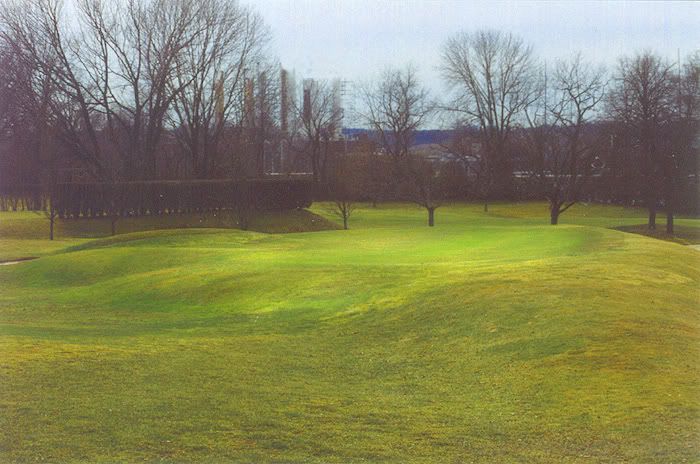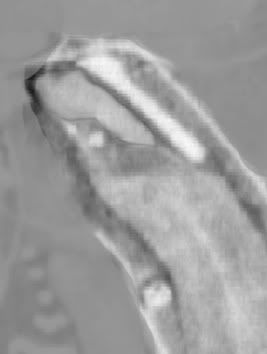North Shore CC on Long Island is an interesting story - one I was involved with a few years ago.
I’m not sure whether it was one of Tom Doak’s “henchmen” (probably Hepner

) or Gil who called me and told me I might want to go look at North Shore’s greens because “it looks a lot like it was built by “one of your guys”
Their 12th, was a beautiful version of a Double Plateau green and right across the cartpath from #12 was the 16th, another version of double plateau. Two good ones on the same course. Interesting
Riding around the course, there was pretty neat version of an Eden complete with a deep ravine between tee and green (there was a bunker ON and ALONG the back of the green so members wouldn’t go over.
There was any number of typical green complexes that were very Raynor-like; a very nice Alps/Punchbowl and a version of the 6th at Garden City (looks like a pork chop) as well as others.
What little is known of early club history, it seems A.W. Tillinghast superimposed a 9 hole layout over the existing Glenwood Country Club, recently purchased by a social club in New York known then as the Harmonie Club. The Glenwood course, which had been opened for less than a year, apparently proved to be a disappointment to the membership, and though it appears Tillinghast routed a full 18 holes, financial constraints limited initial construction to half the layout.
During this period, Seth Raynor was busy in the area constructing Creek, Brookville, and Oakland C.C., and though he has never been listed the architect of record, an examination of the spectacular green complexes at North Shore are replete with textbook examples of his early work. The flow of the course however, in particular the front nine, does not appear to be completely attributable to Raynor, though it appears that he may have elected to divide and reroute portions of Tillinghast's original nine between the front and back. Oddly enough, North Shore possesses back to back par 3's (9th and 10th) and par 5's (3rd and 4th), an extreme departure from Raynor's other courses - though he is almost certainly responsible for all 18 greens.
Best if all there is one of the most literal versions of a Road hole green one might find anywhere, although the representative pot bunker is a quite large and off to the left, leaving a comfortable opening to the green. The rise to the green is outstanding.
Hole 9 is a 200-yard (small green) version of a Redan but the tee was moved (long ago) from the “proper” 45 degree angle to virtually a straight-in line of play. This is somewhat understandable in this case because the green is way too narrow to accept a shot from that angle and fall off to the frontal, Redan bunker drops down to a hellish depth (now a two-stage bunker, one deeper than the other). This, to me is a Tillie version of a Redan.
Rand Jerris, the curator of the Golf House museum, who knows Tillinghast’s work well, came out to the course at a later day and could hardly pin down anything looking like his work.
We did find the remnants of an abandoned green right smack in the 4th fairway as well as a few other “lost” greens sites.
I worked there for awhile but was
“replace” by Ron Forse who went on to do a fine job “restoring” the course.
Tillinghast - Raynor? If you get a chance check it and judge - it’s a very nice layout with very interesting greens.

